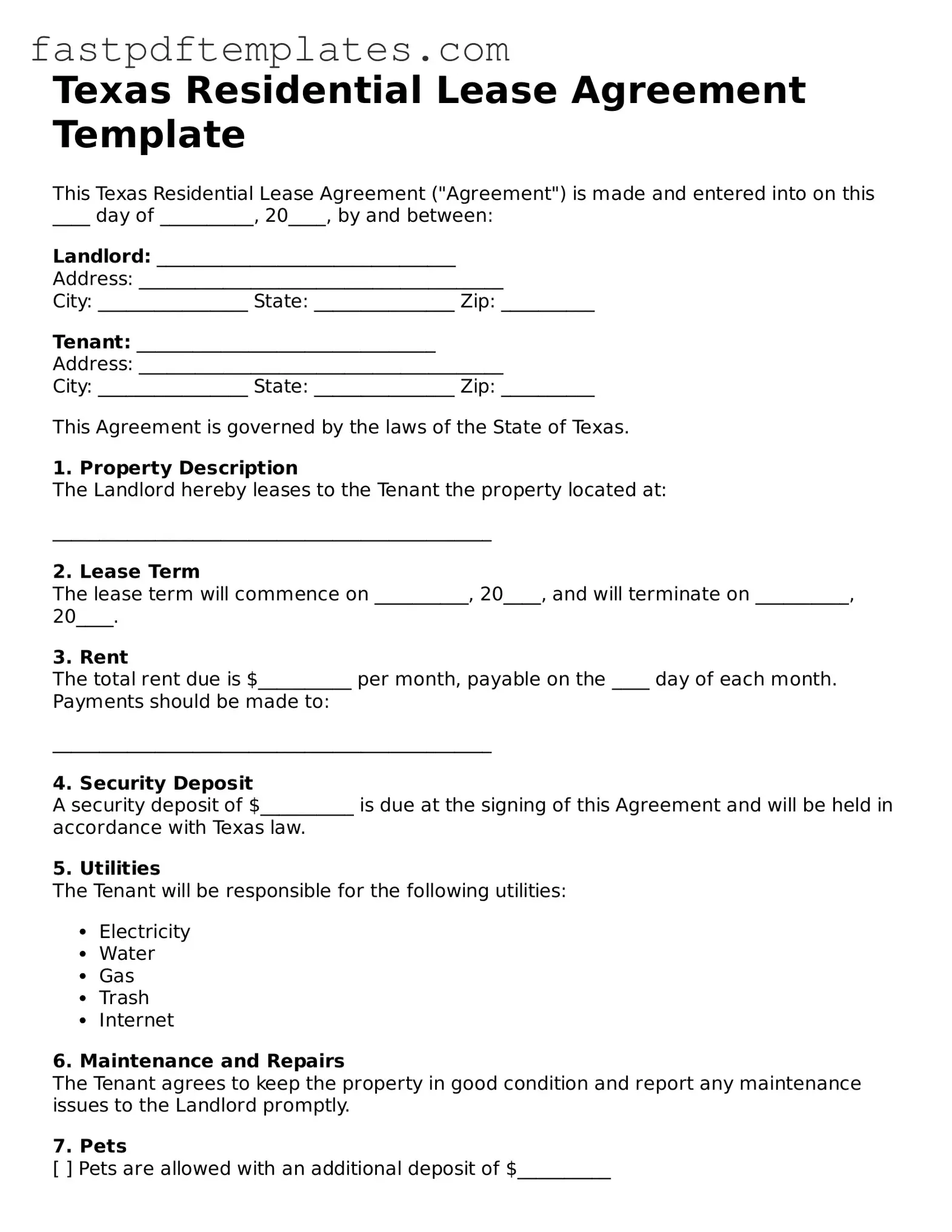Texas Residential Lease Agreement Template
This Texas Residential Lease Agreement ("Agreement") is made and entered into on this ____ day of __________, 20____, by and between:
Landlord: ________________________________
Address: _______________________________________
City: ________________ State: _______________ Zip: __________
Tenant: ________________________________
Address: _______________________________________
City: ________________ State: _______________ Zip: __________
This Agreement is governed by the laws of the State of Texas.
1. Property Description
The Landlord hereby leases to the Tenant the property located at:
_______________________________________________
2. Lease Term
The lease term will commence on __________, 20____, and will terminate on __________, 20____.
3. Rent
The total rent due is $__________ per month, payable on the ____ day of each month. Payments should be made to:
_______________________________________________
4. Security Deposit
A security deposit of $__________ is due at the signing of this Agreement and will be held in accordance with Texas law.
5. Utilities
The Tenant will be responsible for the following utilities:
- Electricity
- Water
- Gas
- Trash
- Internet
6. Maintenance and Repairs
The Tenant agrees to keep the property in good condition and report any maintenance issues to the Landlord promptly.
7. Pets
[ ] Pets are allowed with an additional deposit of $__________
[ ] No pets are allowed.
8. Termination
Either party may terminate this Agreement with a written notice of ____ days, as required by Texas law.
9. Governing Law
This Agreement shall be construed in accordance with the laws of the State of Texas.
IN WITNESS WHEREOF, the parties hereto have executed this Texas Residential Lease Agreement on the date first above written.
Landlord Signature: ____________________________ Date: ____________
Tenant Signature: _____________________________ Date: ____________
